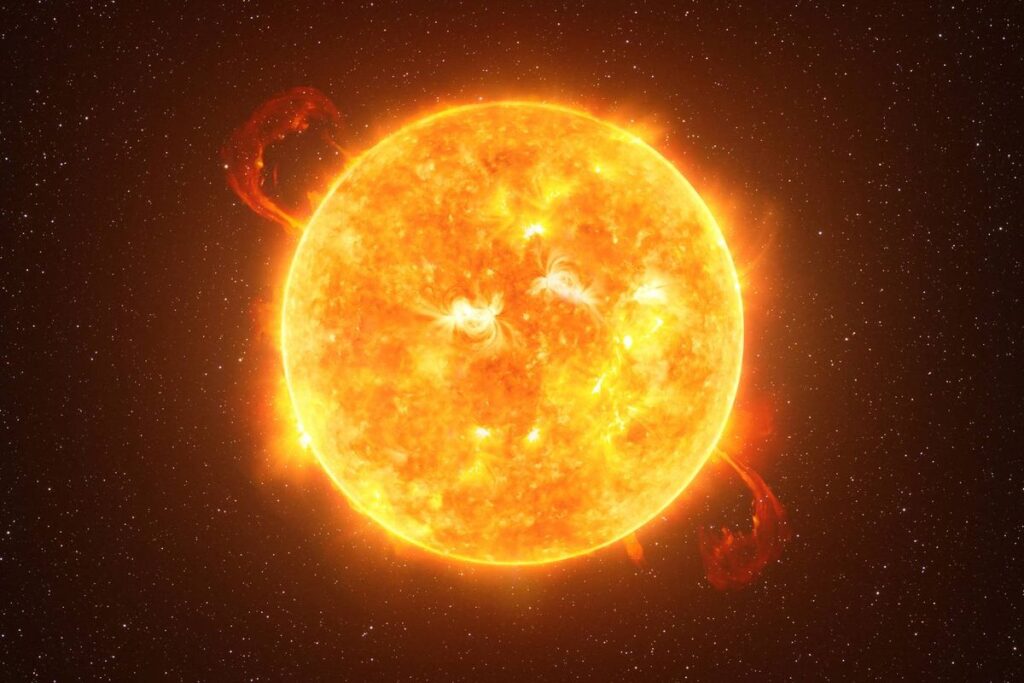The current solar cycle underway is called solar cycle 25 and began in December 2019. Solar cycles refer to 11-year periods of solar activity marked by variations in the number and size of sunspots, solar flares, and other solar events. Solar cycle 25 was initially predicted to be a relatively weak cycle, continuing a recent trend of declining solar activity.
However, new research is revealing it will have its most powerful year yet in 2024. A novel association Researchers from the IISER Kolkata Center of Excellence in Space Sciences a novel association between the sun’s magnetic field and its sunspot cycle that suggests the maximum intensity of solar cycle 25 is quickly approaching with the new year. This discovery, which was made possible by decades-old data archives from multiple global ground-based solar observatories, adds to the long-standing theory of the Waldmeier effect by supporting the hypothesis that the evolution of sunspots is integral to the functioning of the solar dynamo process rather than merely being a symptom of it.
The Waldmeier effect proposes that the increase and decrease in the number of sunspots during a solar cycle are not symmetrical. Named after Swiss astronomer Max Waldmeier, who originally described it in 1935, the theory reveals an imbalance in the evolution of the solar cycle. Sunspot activity steadily develops to a maximum and then declines to a minimum in a normal solar cycle.
According to the Waldmeier effect, the ascent to the solar maximum is frequently more gradual and prolonged, whereas the descent to the solar minimum is steeper and quicker. The Waldmeier effect’s causes are currently unknown, although they are likely related to the complicated interplay of the sun’s magnetic fields. The solar dynamo, a mechanism involving the creation and redistribution of these magnetic fields, drives the sun’s magnetic activity and has now been proven to be influenced by sunspots.
Forecasting a cycle peak The researchers have also demonstrated how observations of the rate of reduction of the sun’s dipole magnetic field may be paired with sunspot observations to forecast when the current cycle will peak. According to their calculations, the maximum intensity of solar cycle 25 will most likely occur in early 2024. Solar activity has been found to lead to space weather events that can be problematic for our planet.
These events can affect the earth’s magnetosphere, ionosphere, and upper atmosphere, potentially disrupting radio communications and GPS systems. They can also induce geomagnetic storms responsible for electric currents in power lines that affect power grids and cause transformer failures. Finally, they have also been shown to influence satellite operations by causing increased atmospheric drag on low-Earth orbit satellites.
As such, monitoring and predicting solar activity is crucial for mitigating potential impacts and this latest work provides crucial information to guide activities for the new year. The study in Sunspots have been observed for over four centuries and the magnetic nature of sunspot cycles has been known for about a century; however, some of its underlying physics still remain elusive. It is known that the solar magnetic cycle involves a recycling of magnetic flux between the poloidal and toroidal components of the magnetic field, that manifests as the solar dipole and sunspots, respectively.
Here, we report the discovery of a new relationship between the rise rate of the sunspot cycle and the decay rate of the solar (axial) dipole moment. This provides an extension to the Waldmeier effect in sunspot cycles and points to the existence of a causal connection between the aforementioned physical quantities, which can be succinctly stated as the decay rate of the Sun’s dipole moment is related to the rate of rise of the following sunspot cycle. We demonstrate how one may take advantage of this new relationship to predict the timing of the sunspot cycle.
Our analysis indicates solar cycle 25 is expected to be a weak-moderate cycle, peaking in 2024. .
From: interestingengineering
URL: https://interestingengineering.com/science/solar-activity-likely-to-reach-maximum-intensity-in-2024
